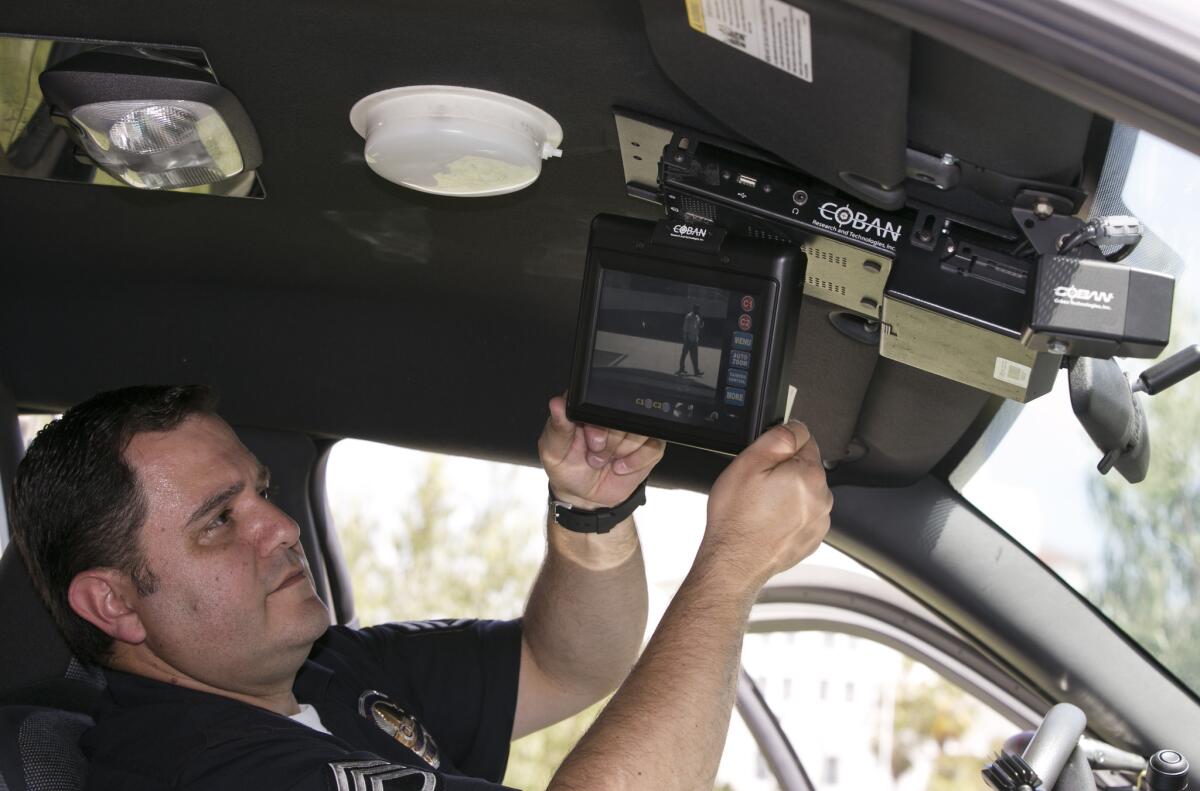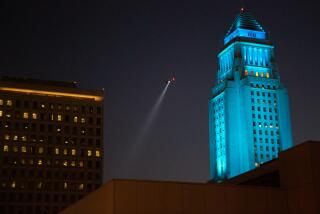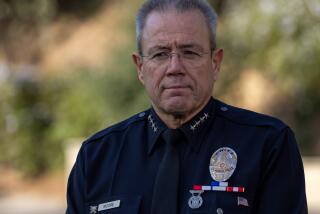LAPD not sufficiently checking patrol car videos for officer misconduct, audit finds

The Los Angeles Police Commission’s civilian watchdog released a report Friday faulting police department supervisors for not proactively checking in-car video recordings to monitor for officer misconduct.
Inspector General Alex Bustamante said police officials generally review recordings only when investigating “critical incidents” such as shootings and pursuits, or when a complaint is made against an officer.
Although the department checks to see whether the cameras were activated, Bustamante said, supervisors generally don’t look at what is captured on the videos or review them to assess officer conduct, tactics or decision-making. Doing so would be “too time-consuming and labor intensive,” according to the report.
Moving forward, Bustamante wrote, his office will conduct “regular and substantive reviews” of the recordings to help LAPD officials more routinely evaluate the use of the technology and officers’ actions.
LAPD Cmdr. Andrew Smith said the department was reviewing the inspector general’s findings, but declined to comment until the report was publicly presented to the Police Commission on Tuesday.
Bustamante described the technology as a valuable tool and said it worked well in providing information about many LAPD stops. But he also outlined concerns, finding that officers didn’t always turn on the cameras at the start of pedestrian stops and sometimes engaged subjects in areas that were out of sight.
As a result, the report said, the inspector general and LAPD officials identified measures “that will enable the department to obtain more complete video of each stop.” Those steps included drafting a new directive that “explicitly requires” officers to activate the cameras at all stop initiations.
Department policy requires officers to turn on the cameras “during the initiation” of all vehicle stops, suspect transports and pursuits or responses that require lights and sirens. But for pedestrian stops, the policy states, the cameras must be activated “when practicable.” The cameras turn on automatically whenever an officer activates a cruiser’s emergency lights. They also can be activated manually.
The installation and effective use of cameras in LAPD patrol cars has been a long-running effort — and a problematic one. For more than two decades, the department has been trying to install the technology agency-wide, hoping that recordings of officers’ actions would help keep them accountable and guard against false accusations of misconduct.
But the cameras still have not been installed in all of the LAPD’s patrol cars. And last summer, it was revealed that officers in South L.A. allegedly had tampered with associated voice recording equipment to avoid being monitored.
The LAPD is also taking steps to outfit each officer with a body camera, making it the largest law enforcement agency in the country to use that technology on a wide scale. Bustamante wrote that he conducted his most recent audit “in light of the pending implementation” of the body cameras.
In his report, Bustamante found “a small number of cases” where an officer’s microphone “did not appear to be recording any audio.” He recommended the LAPD look into the malfunctions “to ensure that they are not the result of officers’ use of the system.”
The inspector general reviewed video from 211 vehicle and pedestrian stops conducted by officers working in the LAPD’s South Bureau.
Although cameras generally captured the entirety of the vehicle stops, Bustamante noticed inconsistencies with pedestrian stops. He acknowledged that pedestrian stops are typically more fluid than vehicle stops, and said there were “various reasons why a pedestrian stop might not be captured on camera.”
But he said nearly all of the pedestrian stops occurred at least partially out of the camera’s sight. The most common reason, he said, was because officers had driven their patrol cars past the subject before making the stop, meaning it occurred out of sight of the front-facing camera.
Bustamante said he “asked the department to review these cases to determine whether these incidents present tactical or other concerns.”
Follow @katemather for more LAPD news.
More to Read
Start your day right
Sign up for Essential California for news, features and recommendations from the L.A. Times and beyond in your inbox six days a week.
You may occasionally receive promotional content from the Los Angeles Times.







